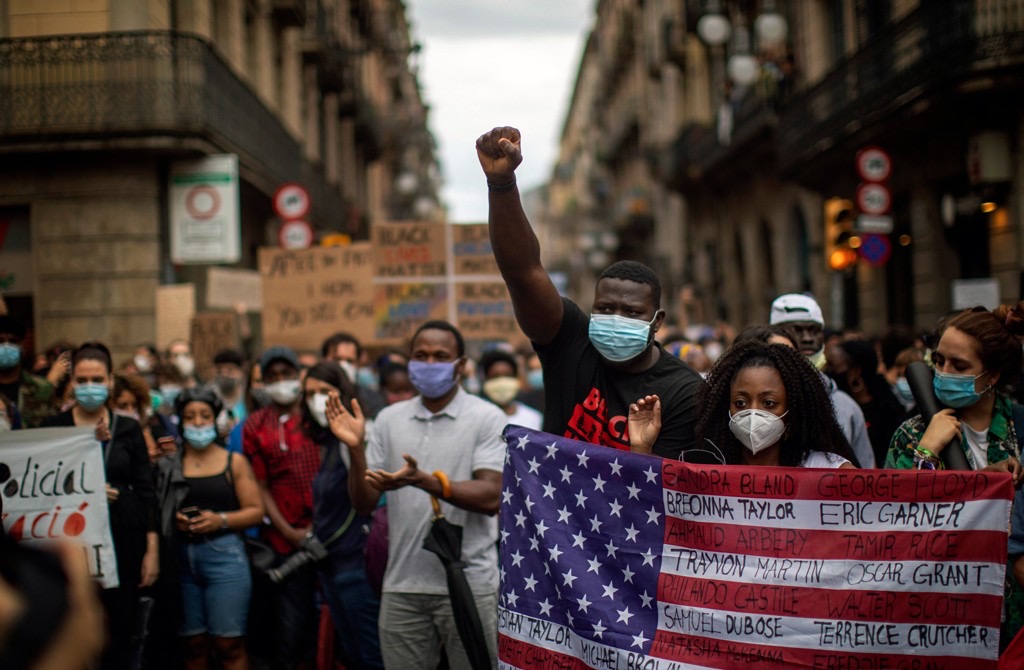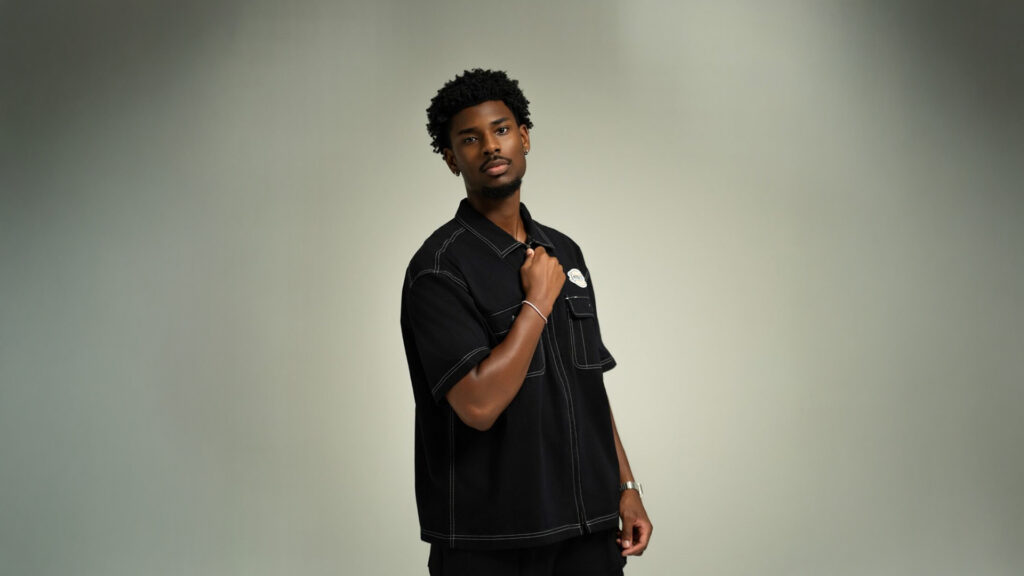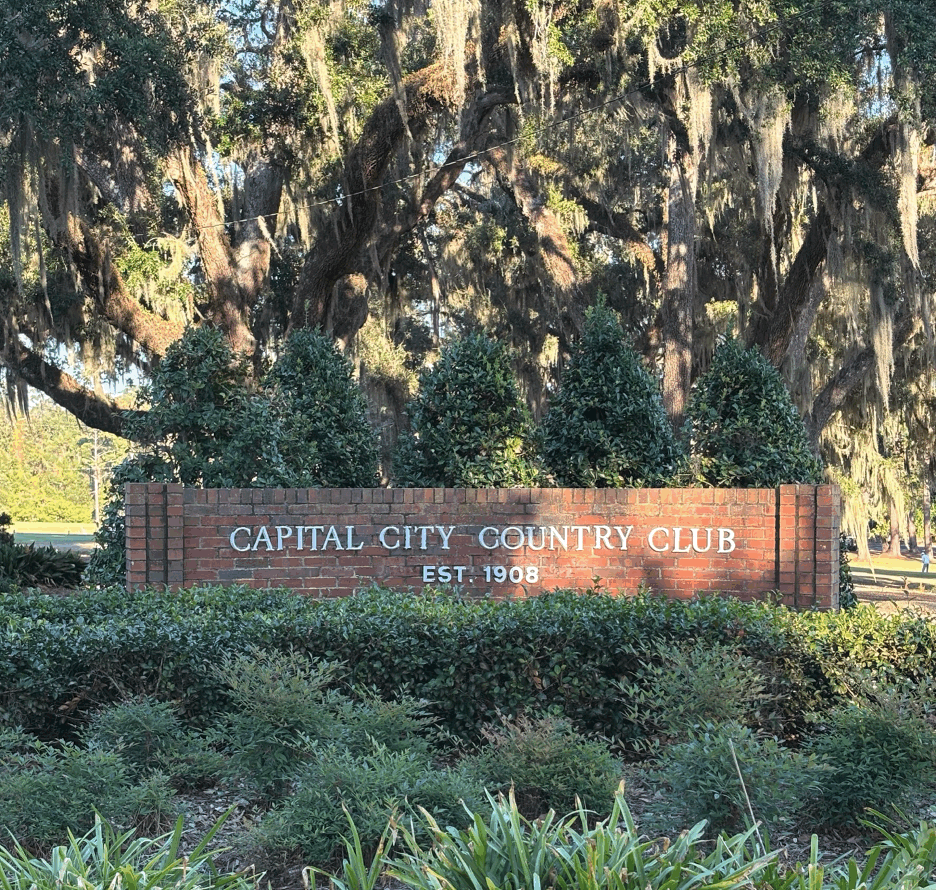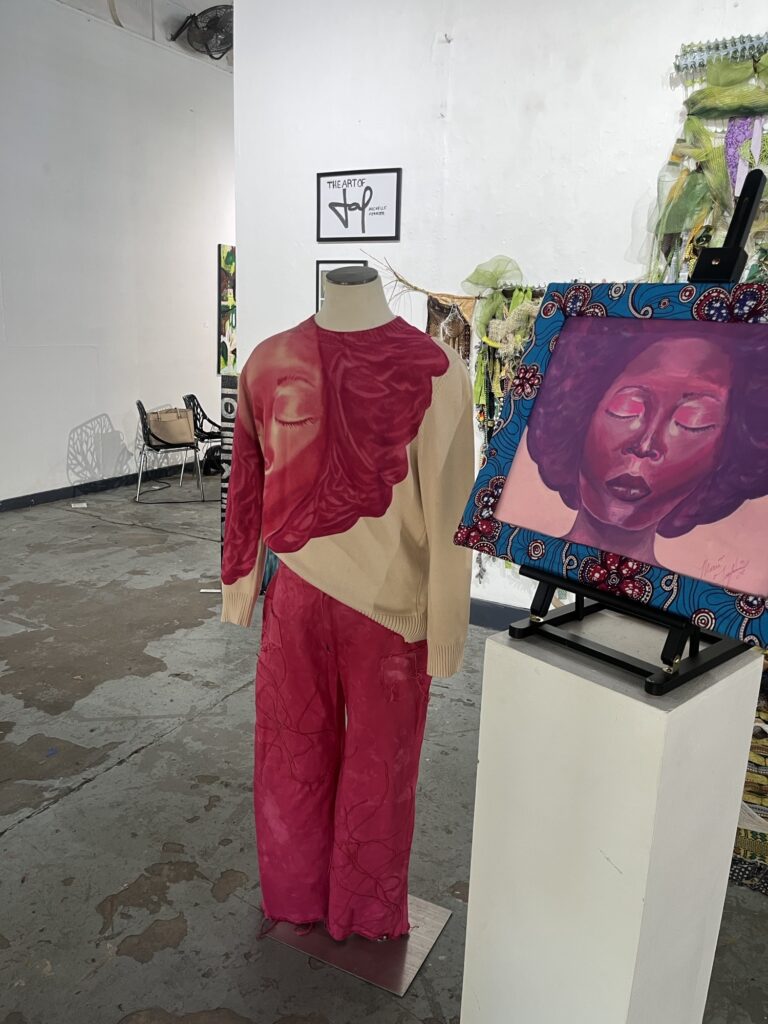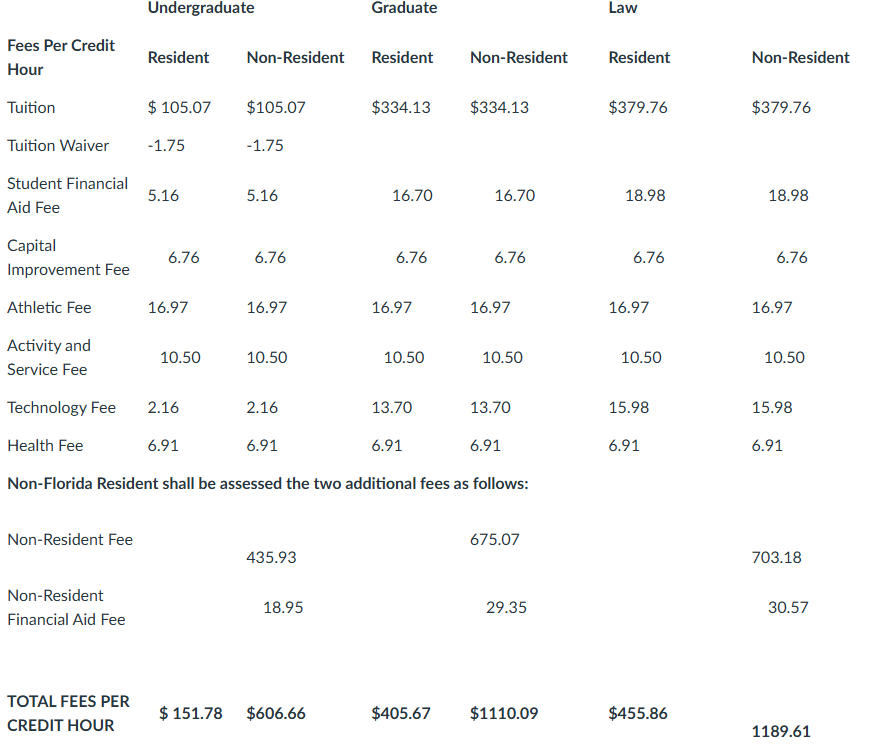In this op-ed, Florida A&M University junior Daniel J. Newton recounts of riots of the past to draw parallels to the national uprising of the present.
On May 25, 2020, George Floyd, an African American male, was killed in police custody in Minneapolis. Since then, protests and riots have broken out in several cities across the country.
The riots that we are witnessing are not new to the country. Outpours of rage and sorrow have long been a response to social injustice, especially in cases of police brutality. We are in an unprecedented moment in history, but the prominent turning points of the past witnessed riots too.
King Assassination Riots, 1968
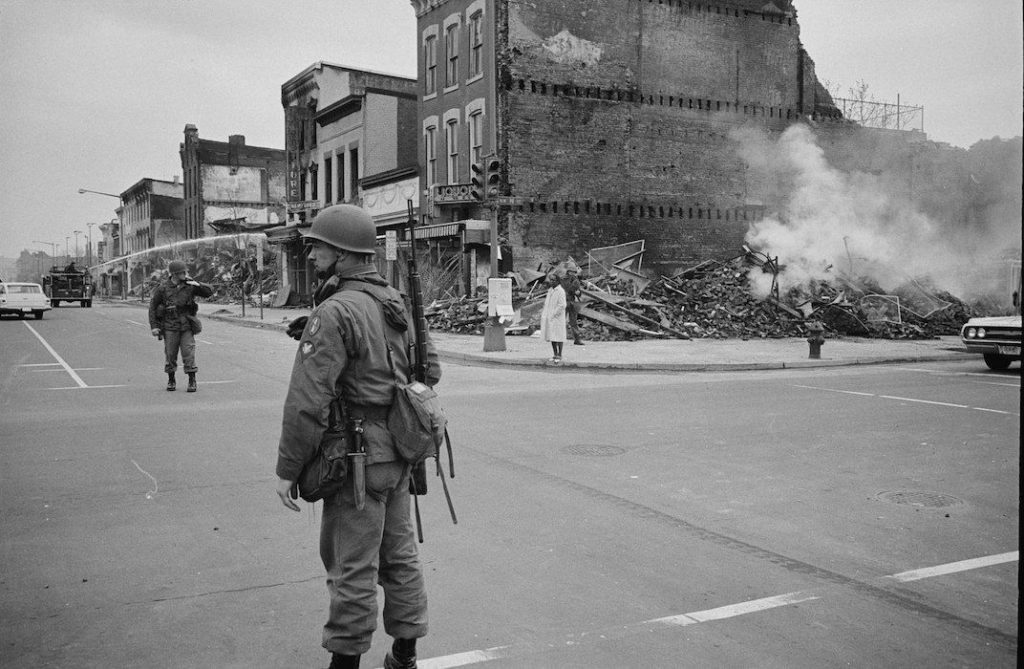
The streets of Washington, D.C. following the Assassination of Martin Luther King, Jr. Photo courtesy smithsonianmag.com and the Library of Congress.
On April 4, 1968, the nation’s heralded civil rights leader, Martin Luther King, Jr., was assassinated at the Lorraine Motel in Memphis, Tenn. For ten days following his murder, 200 cities across America erupted into riots that bore witness to looting and arson. The riots, given the moniker “The Holy Week Uprising,” resulted in the deaths of 43 people, the arrests of 27,000 people and the injury of 3,500 people.
54 of the cities saw more than $100,000 in property damage. Cities such as Baltimore and Kansas City saw millions of dollars in property damage. Washington, D.C. experienced the greatest hit with $24 million in insured property damage, which took the city decades to fully recover from.
In New York City, Mayor John Lindsay was an ally to the Black community and marched alongside civil rights leaders. It was because of his efforts that New York City saw less damage than expected.
King’s death was the main catalyst but outrage was also fueled by the problems that loomed at the time of his assassination. These problems included poverty, lack of access to housing, discrimination in the job market and the intensifying economic plight in Black communities.
Lyndon Johnson, the president at the time, responded by working with local and state governments to deploy 58,000 National Guardsmen and Army soldiers to assist law enforcement with derailing the violence. He also addressed the concerns of the African American community and pushed Congress to address some of the problems with the Fair Housing Act of 1968. This act prohibited discrimination in the sale, rental and financing of housing.
McDuffie Riots, 1979
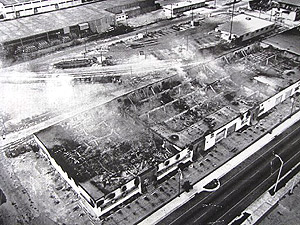
Buildings burn in Miami after officers who killed McDuffie were found not guilty. Photo courtesy blackpast.org.
The McDuffie Riots followed the death of Arthur McDuffie in Miami. McDuffie was involved in a high-speed police chase after running a red light on December 17, 1979, and was beaten by as many as 12 officers once they stopped him. The assault put McDuffie into a coma and he later died in the hospital.
There were protests following his death but what led to a raging outcry from the community came six months later when an all-white jury found the four officers on trial not guilty. Protesters took to the streets in droves following the ruling.
For about two days thereafter, many businesses were burned and looted, including retail and grocery stores. The largest business burned down was the Norton Tire Company headquarters, which was a 75,000 square-foot building.
Gov. Bob Graham mobilized 1,100 National Guardsmen, 170 Florida Highway Patrol troops, 75 State Wildlife officers and 50 Florida Marine Patrol officers. These officers and personnel barraged protesters with tear gas as a de-escalation strategy.
Over 18 people lost their lives, 400 people were injured and of these injuries, more than 270 were treated in hospitals.
The riots resulted in about $100 million in property damage, mostly in the Brownsville area of Miami. This community was known for being notably filled with mostly African Americans occupying all professions — such as teachers, doctors and judges. The community never fully rebuilt after the riots and residents now complain of having no places to do their shopping. Older residents remember a thriving small community that used to have ample access to neighborhood stores and services.
LA Rodney King Riots, 1992
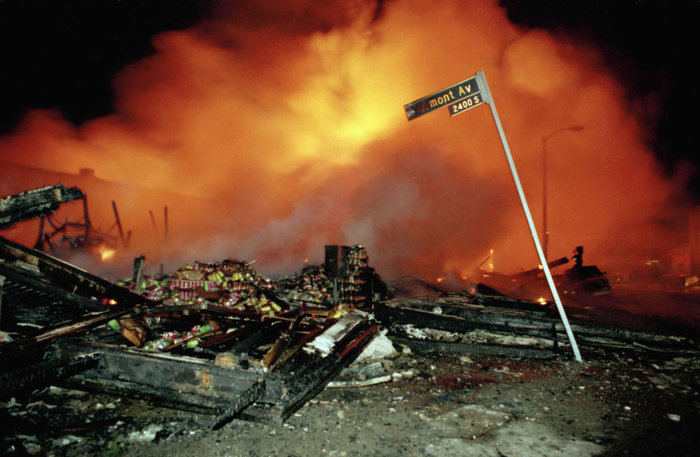
Damage and fire seen in the streets of Los Angeles after the four officers who beat Rodney King were found not guilty. Photo courtesy npr.org.
The LA Riots of 1992 took place in Los Angeles, Calif., following the beating of Rodney King by the Los Angeles Police Department in March 1991. He led police on a high-speed chase and was later charged with driving under the influence. Once stopped, police pulled King out of his vehicle and proceeded to beat him while he was lying on the ground. Video footage captured King being kicked and beaten with batons by the LAPD for approximately 15 minutes as more than a dozen cops stood by and witnessed the excessive use of force.
King’s injuries consisted of skull fractures, broken bones, broken teeth and permanent brain damage. The LA community, where tensions with the embattled police department were already brewing, became extremely angered a year later when the four officers on trial were found not guilty on April 29, 1992.
Following the verdict, there were five days of unrelenting unrest. LA residents set fires, looted and destroyed many businesses in the area. The city faced approximately $1 billion in property damage. The riots stopped mail delivery, established a curfew from sunset to sunrise and prohibited most residents from going to work or school as employers and neighboring schools closed for safety reasons.
To abate tensions in the city, Mayor Tom Bradley declared a state of emergency during this time and Gov. Pete Wilson ordered 2,000 National Guardsmen to report to the city. King himself tried to resolve the unrest on the third day of protesting and urged everyone to “get along.” However, protests still continued for two days after his public appeal.
There were more than 50 riot-related deaths. Ten of those deaths were people who were shot by LAPD officers. More than 2,000 people were injured and nearly 6,000 alleged looters and arsonists were arrested.
The riots that took place in LA are even more recognized because the community never rebuilt. Mayor Bradley announced an organization titled “Rebuild L.A.” to spearhead the initiative to rebuild the community but it was to little avail as its potential success dwindled over time. Less than two years after the riots, the Northridge earthquake caused even more damage. The damage was estimated at $20 billion and the rebuilding efforts could not compete with so much physical damage to the city.
Ferguson Unrest, 2014
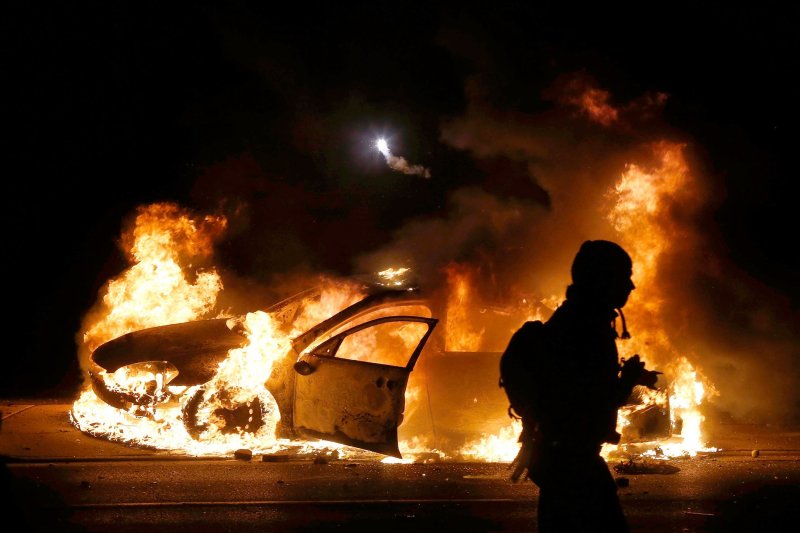
A police car set on fire during the Ferguson unrest following the death of Michael Brown. Photo courtesy time.com.
The Ferguson unrest was a response to the police shooting that killed Michael Brown, an unarmed black teenager, on August 9, 2014, in Ferguson, Mo.
Outrage first flooded the streets the evening following the day of Brown’s death. In Ferguson, protesters were seen vandalizing cars, looting stores and facing off with police. According to local coverage, at least a dozen businesses were looted and at least two businesses were set ablaze. 150 police officers responded in riot gear and armored vehicles and arrested 32 individuals.
Then on November 24, 2014, a reckoning returned to the streets after a jury voted not to charge Darren Wilson, the officer who shot him. Protesters burned and looted buildings, flipped several police cars and pelted police officers with rocks.
Jay Nixon, the governor of Missouri, had already called a state of emergency days earlier in anticipation for the community’s response to possibly hearing verdicts that did not assign culpability to law enforcement.
Our Turning Point In History: George Floyd

A police car set on fire in Minneapolis following the death of George Floyd. Photo courtesy foxnews.com
Presently, the country’s unrest follows the death of George Floyd who died of reported asphyxiation after a Minneapolis police officer kneeled on Floyd’s neck for roughly over eight minutes. In every state across the country, there have been protests in response to this systemic police brutality — the same brutality that catalyzed the McDuffie, LA and Ferguson riots.
Across the country, there have been several incidents. Four officers were shot and wounded in St. Louis and one was wounded in Las Vegas. Fires erupted through a looted strip mall in LA and two people were killed during unrest in Illinois. Also, many protesters, who were considered peaceful, have been wrongfully arrested by police officers across the nation.
Similar to the other riots discussed, curfews have been established in cities including New York City and Washington, D.C. Law enforcement has also used tear gas, pepper spray and physical force on demonstrators. Rubber bullets, which can cause injury and have the potential to be deadly, have also been used by police.
There have been about 10,000 arrests made across the country, and millions of dollars have been seen in damage. Minneapolis alone has seen about $55 million in damage and that total is rising as the city is beset by ongoing protests.
These riots, like the ones after the assassination of King, have been seen across the country and garnered a response from the president. President Donald Trump responded in a speech on June 1, and he said that Americans are “rightfully sickened.” He also declared himself as the president of “law and order” who will put an end to riots and lawlessness. Trump’s promise to restore order is not out of the ordinary. Historically, calming unrest within the country is helpful for reelection, which he is up for this November.
President Trump, like administration during past riots, has strongly suggested that all governors deploy the National Guard. Since then, about 70,000 guardsmen have been deployed across the country.
Though things may seem shocking, the Floyd riots in response to police brutality are not out of the ordinary in comparison to other landmark protests in America’s history.

